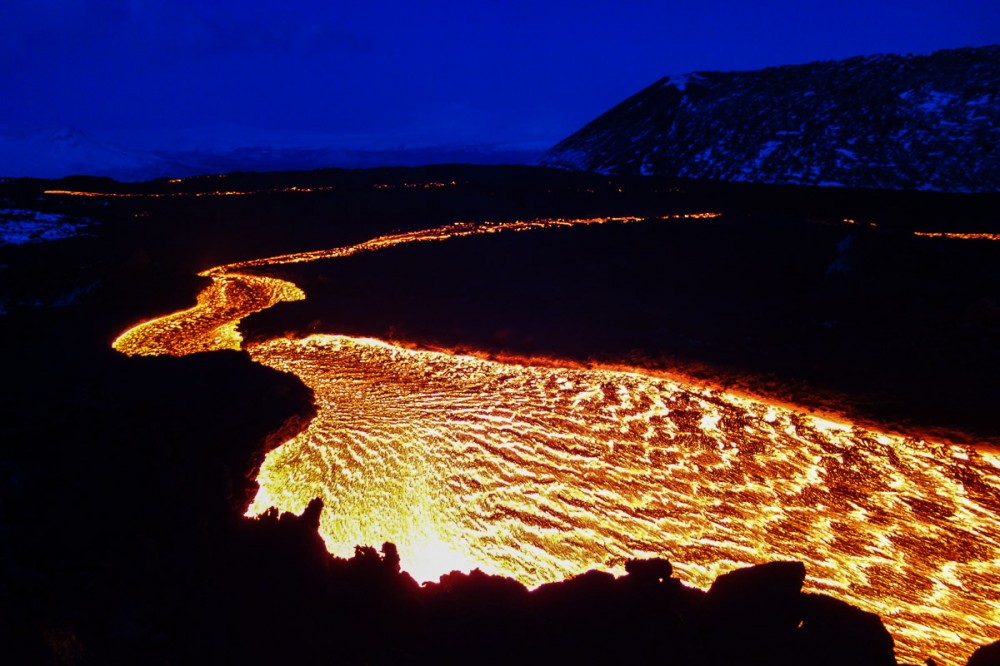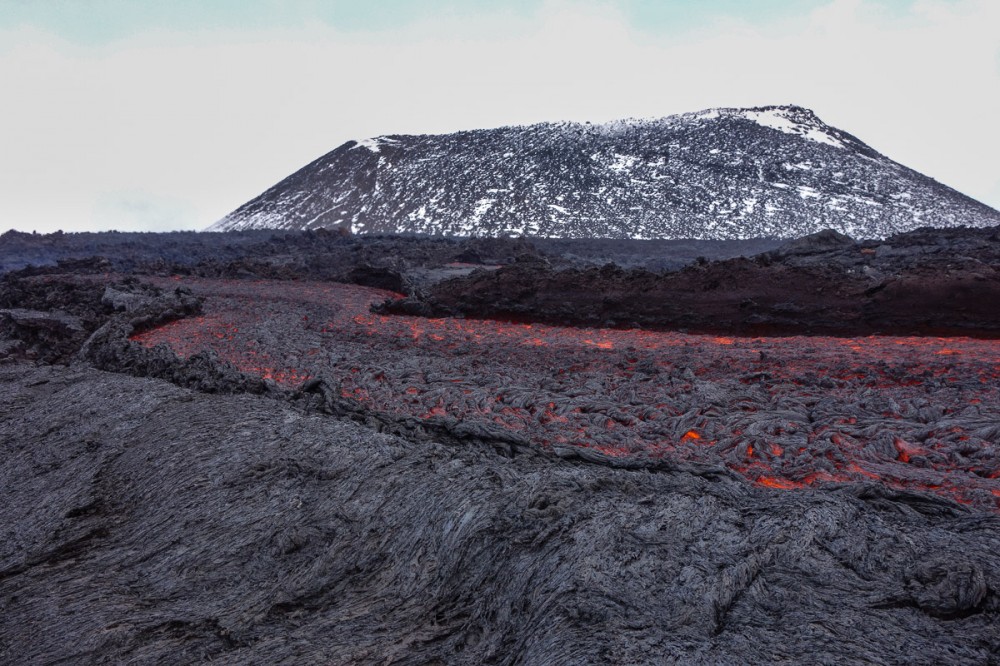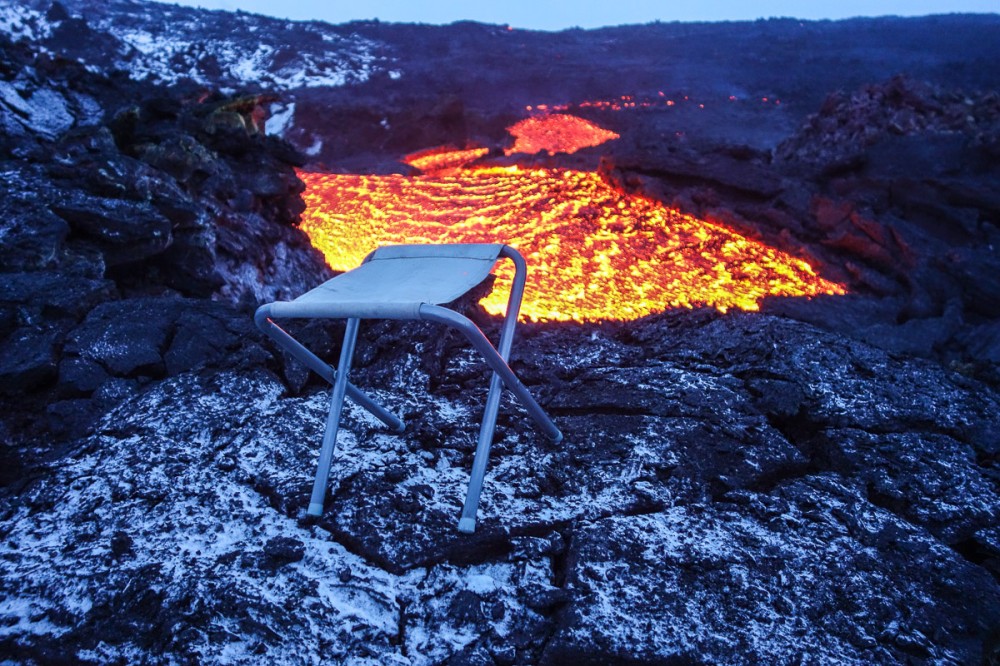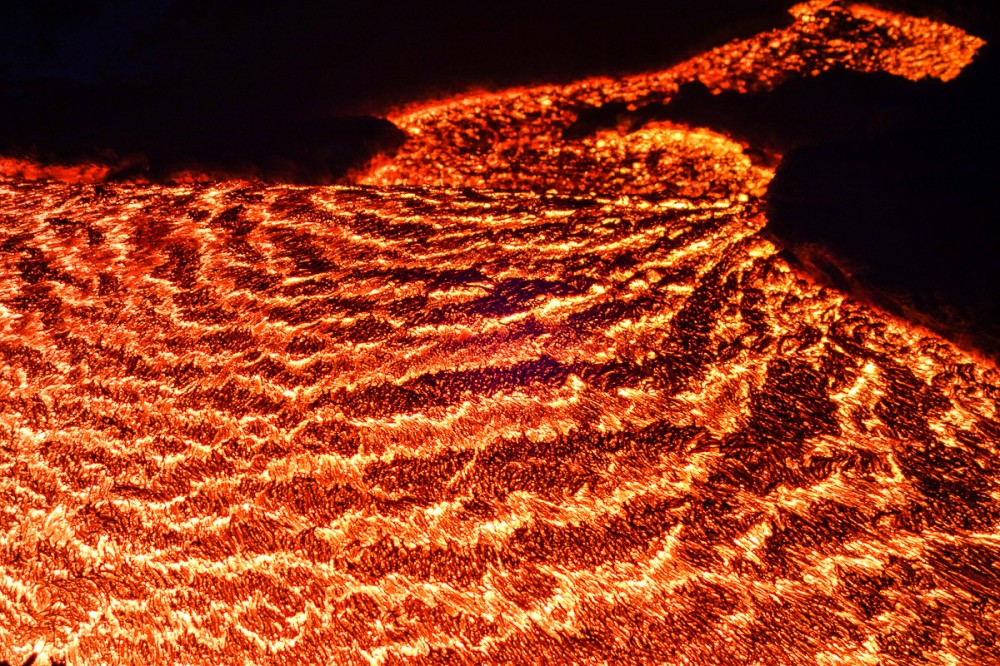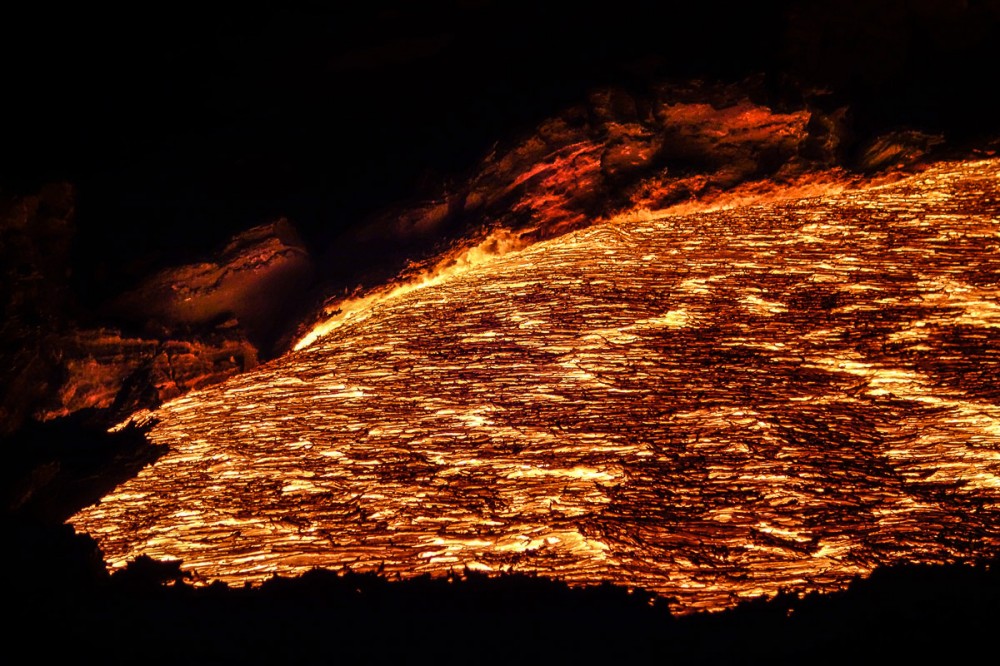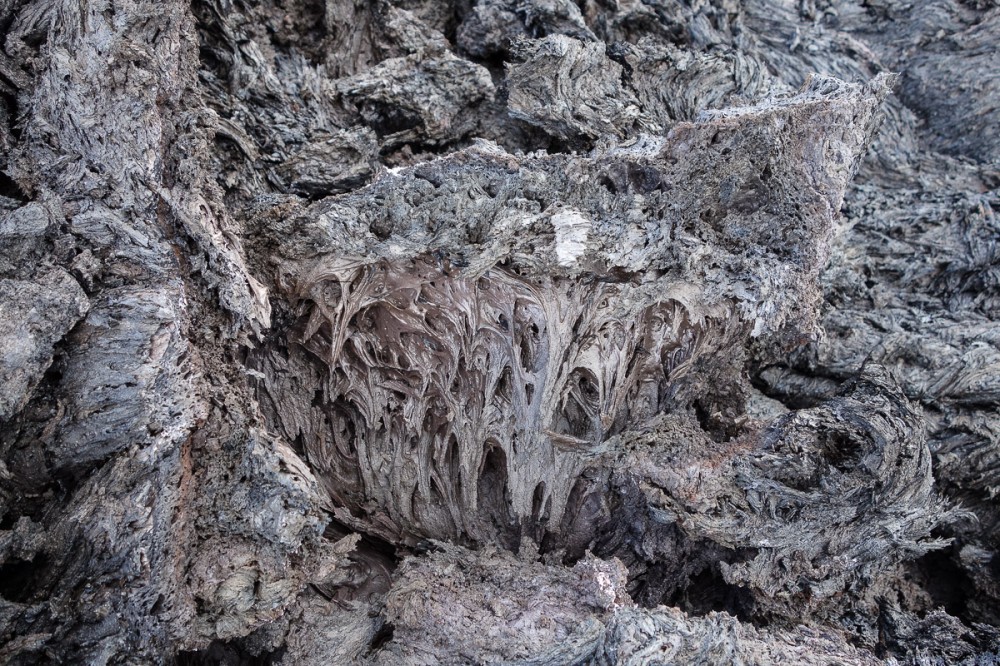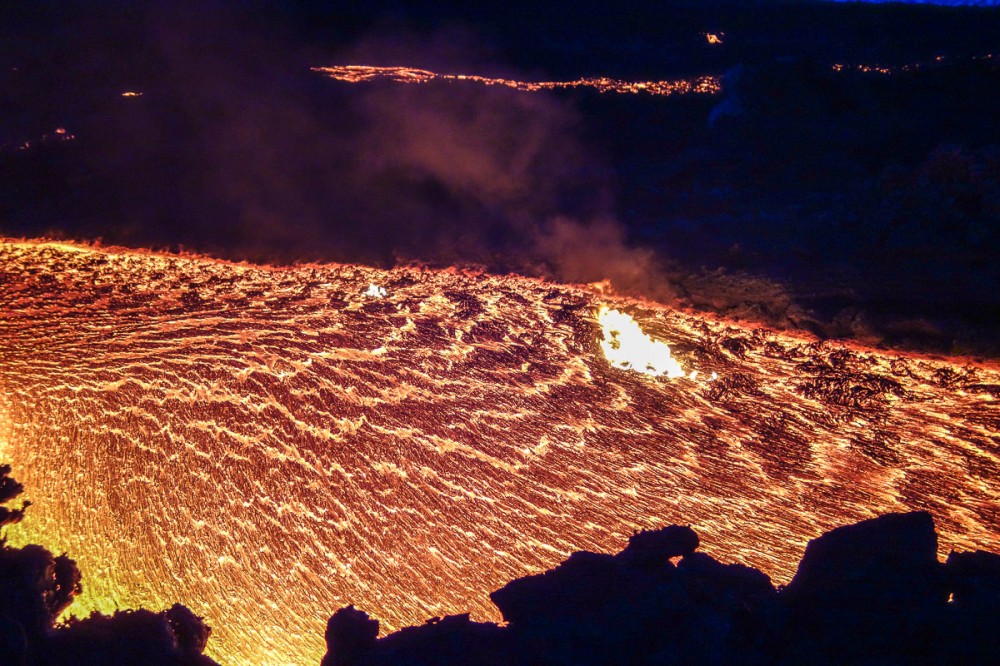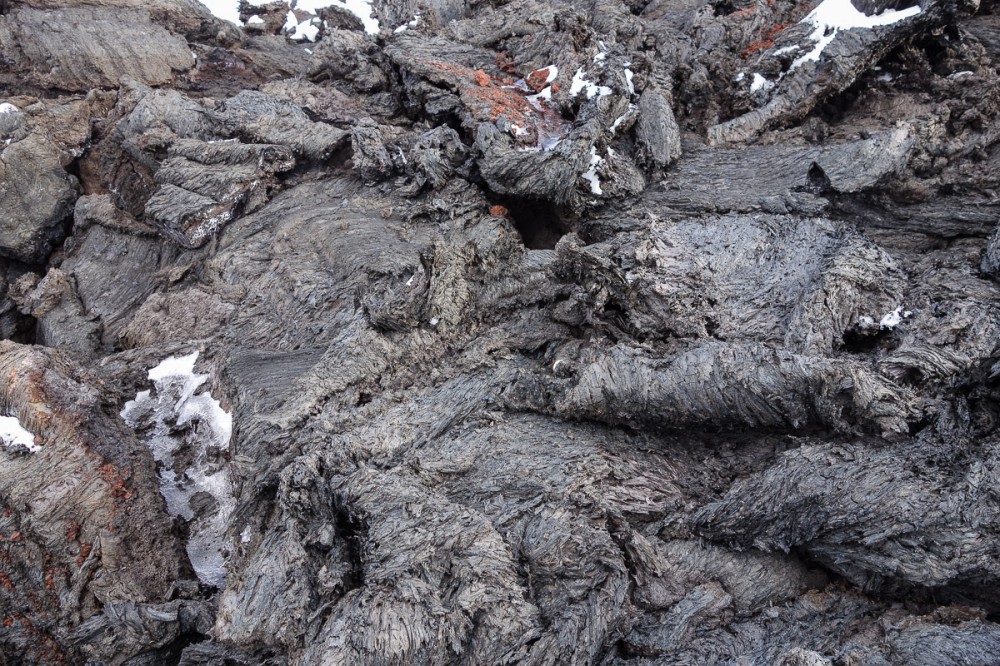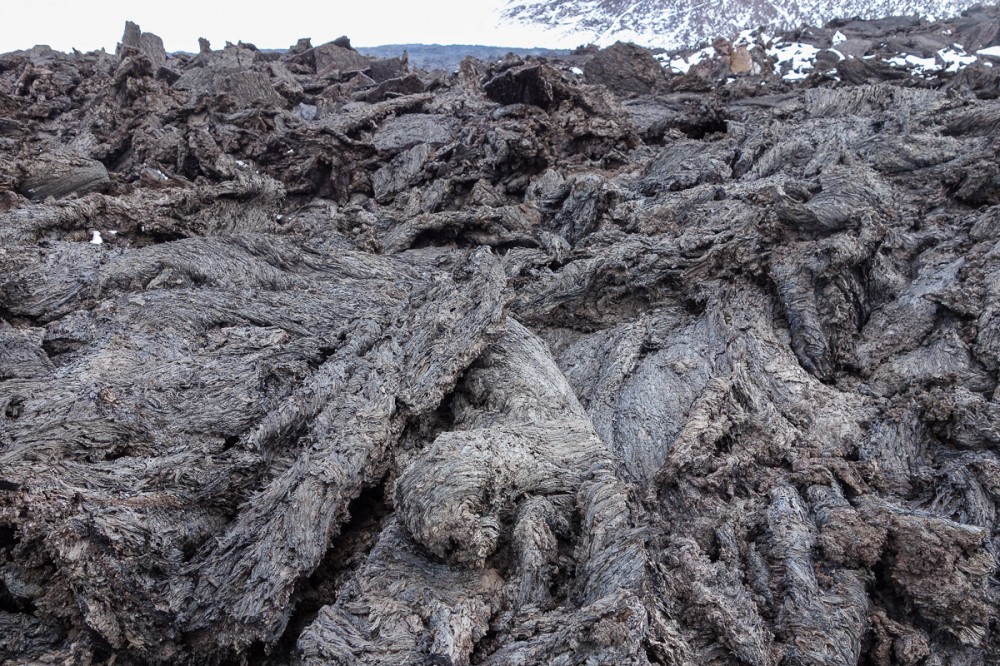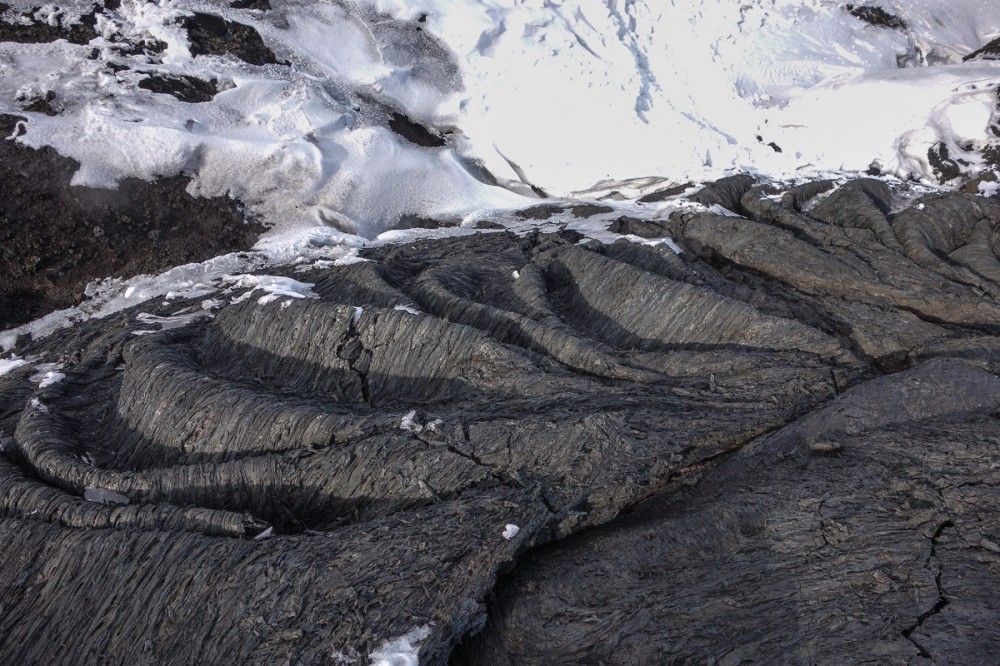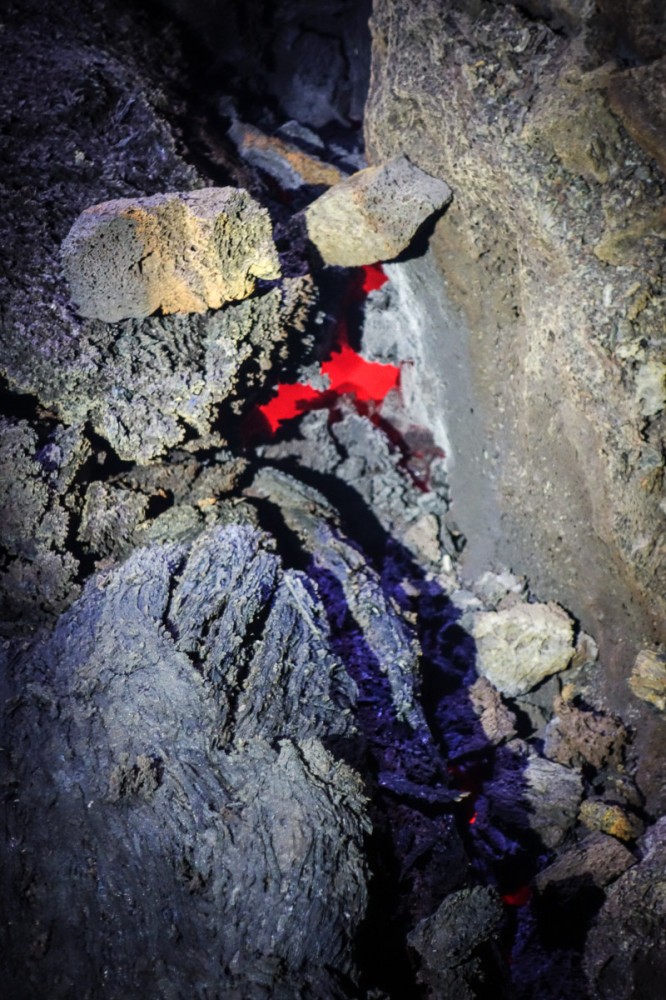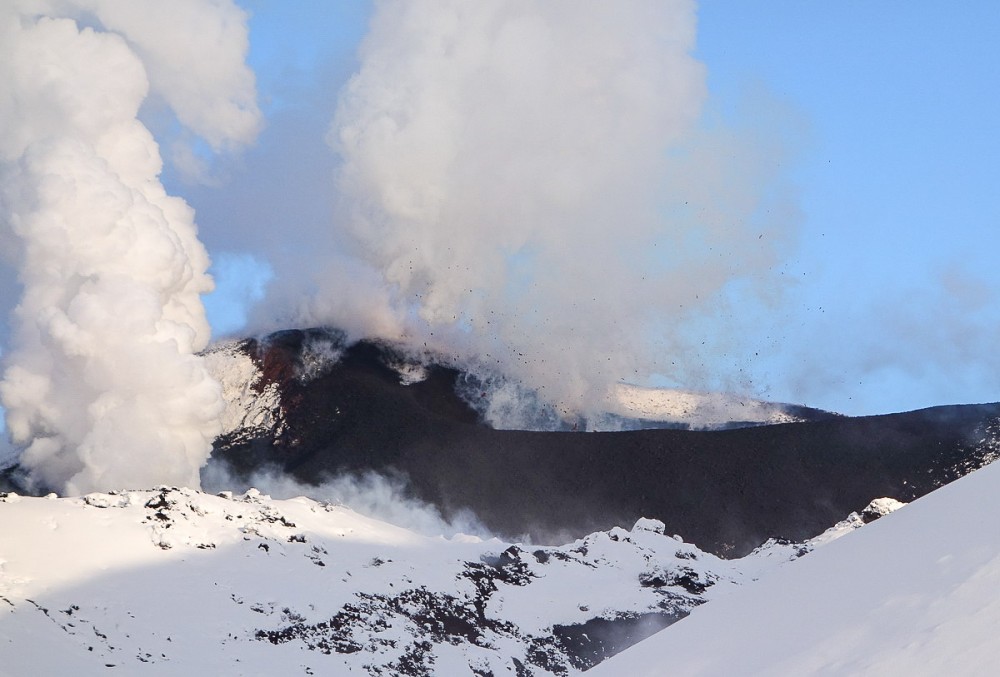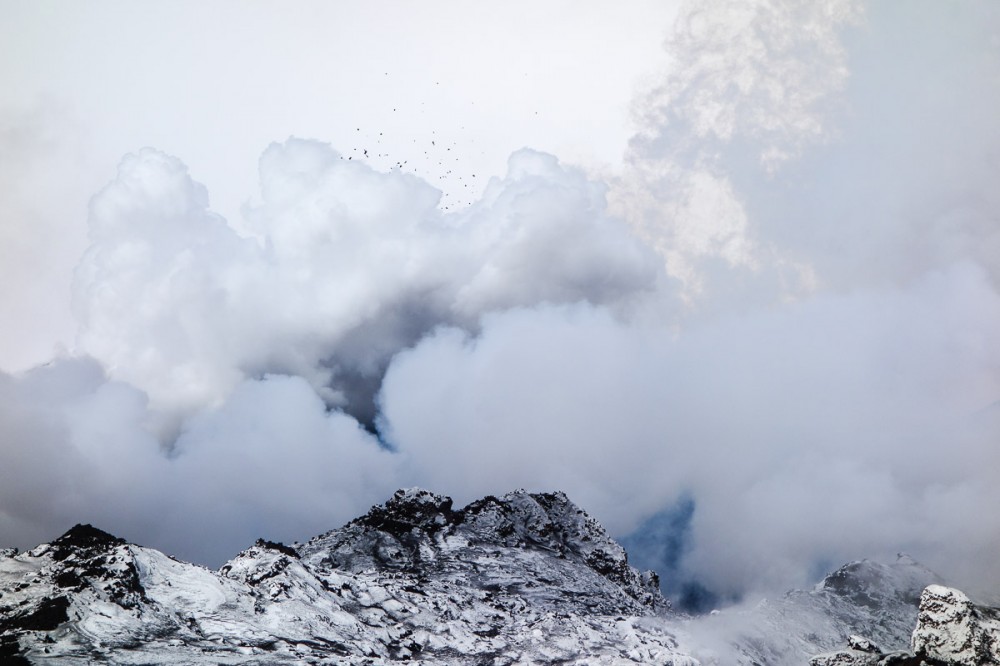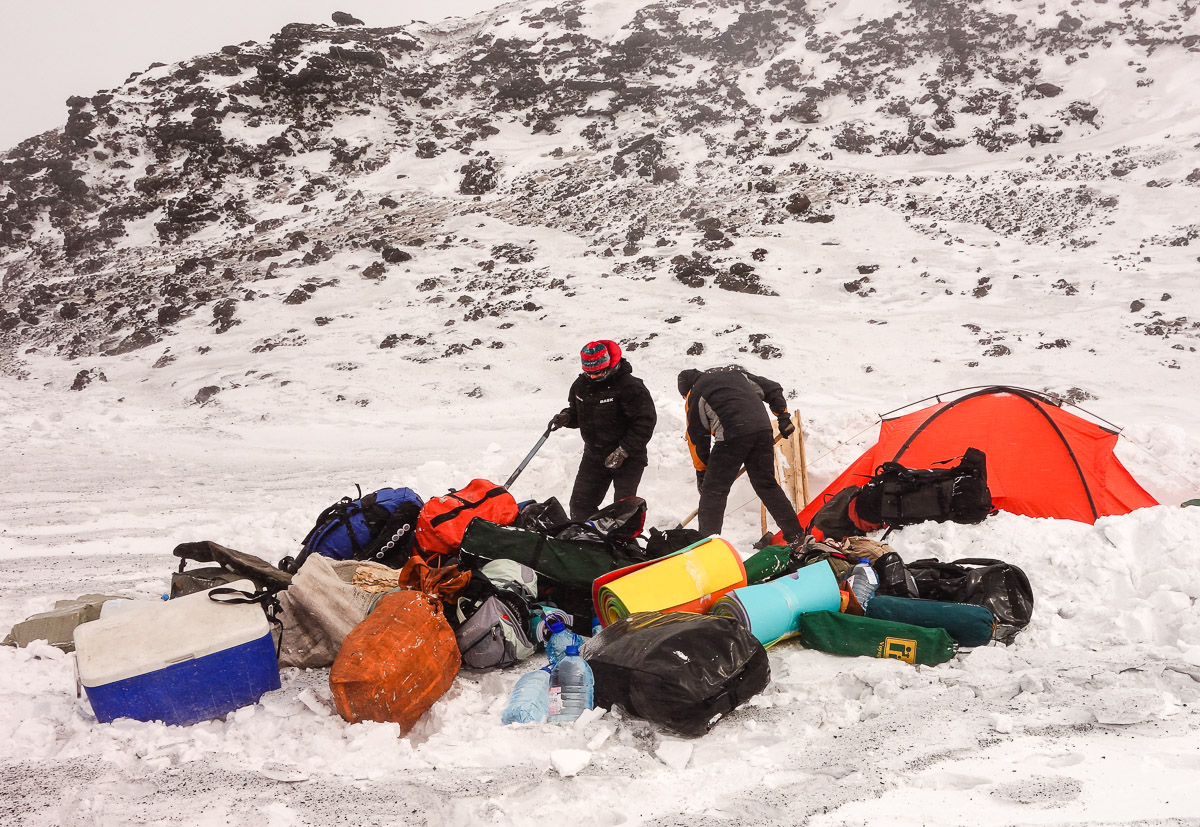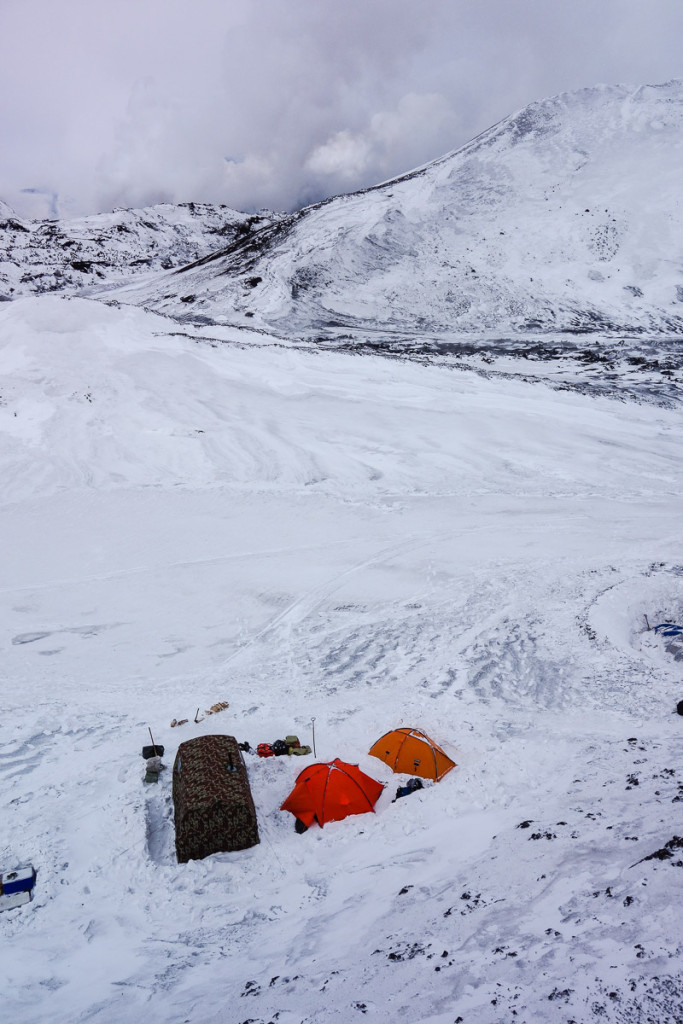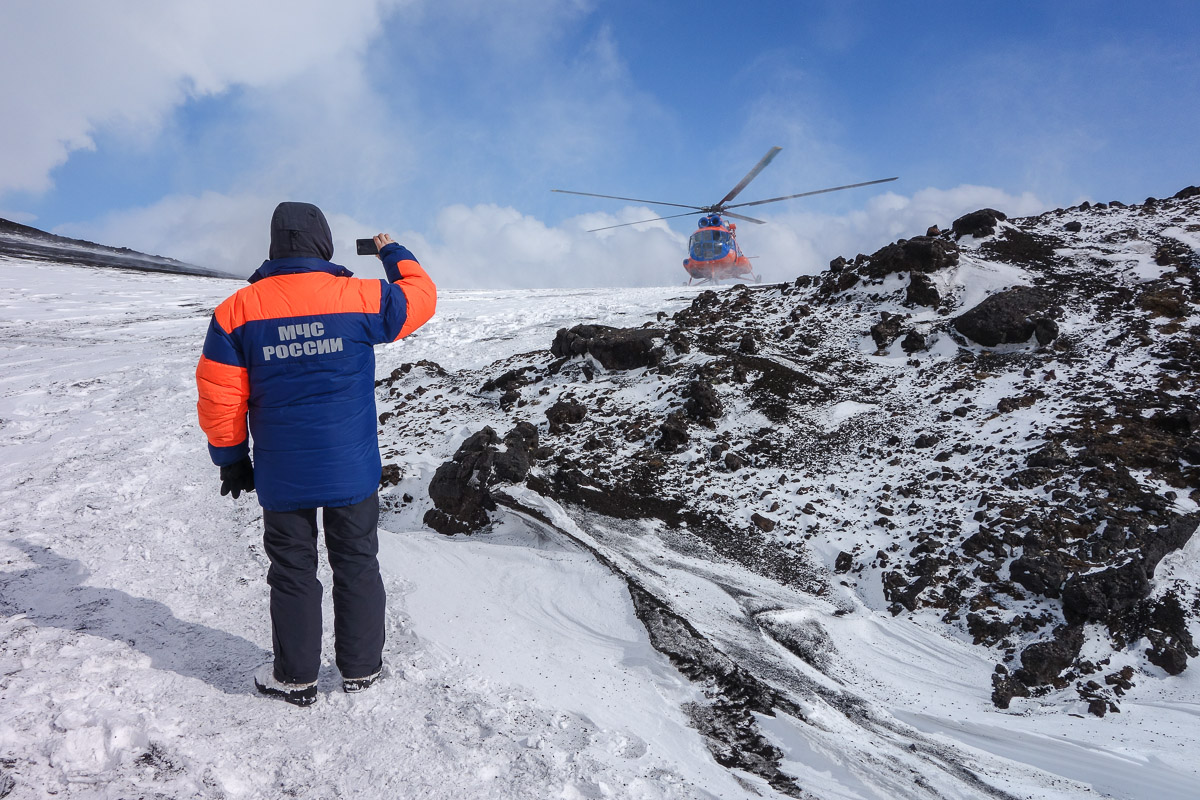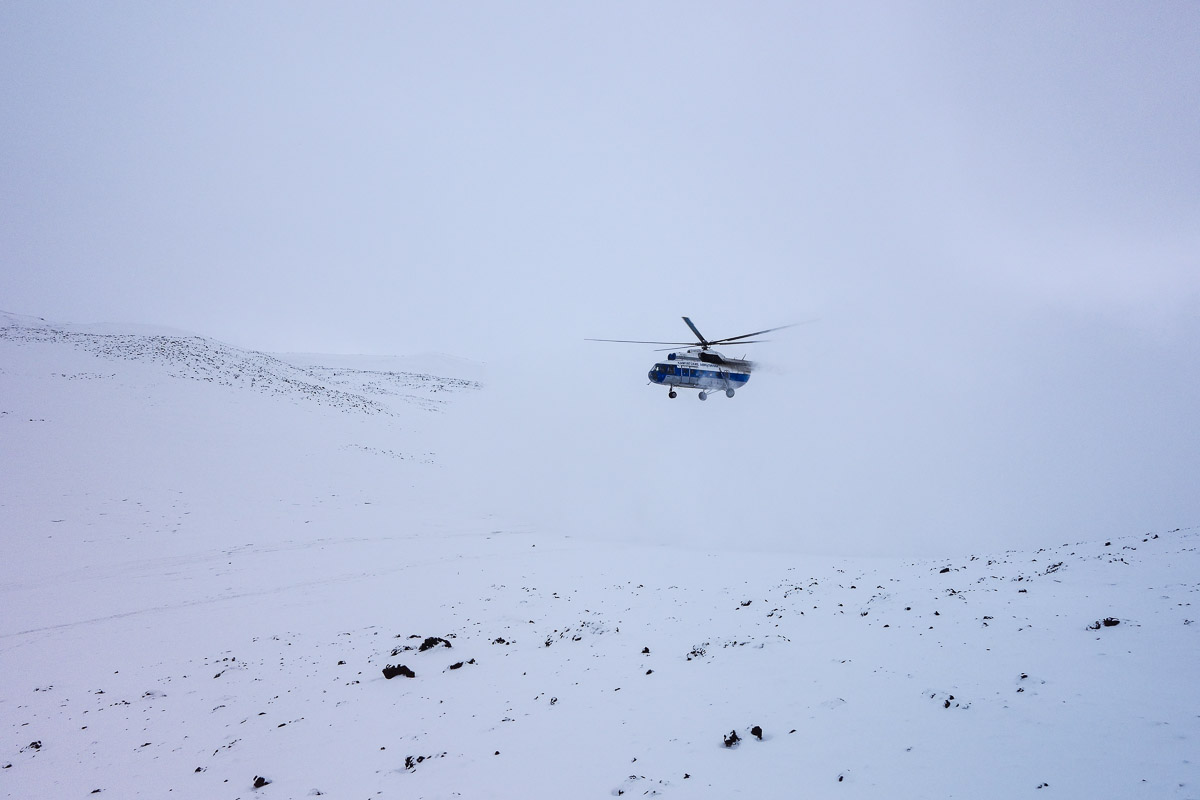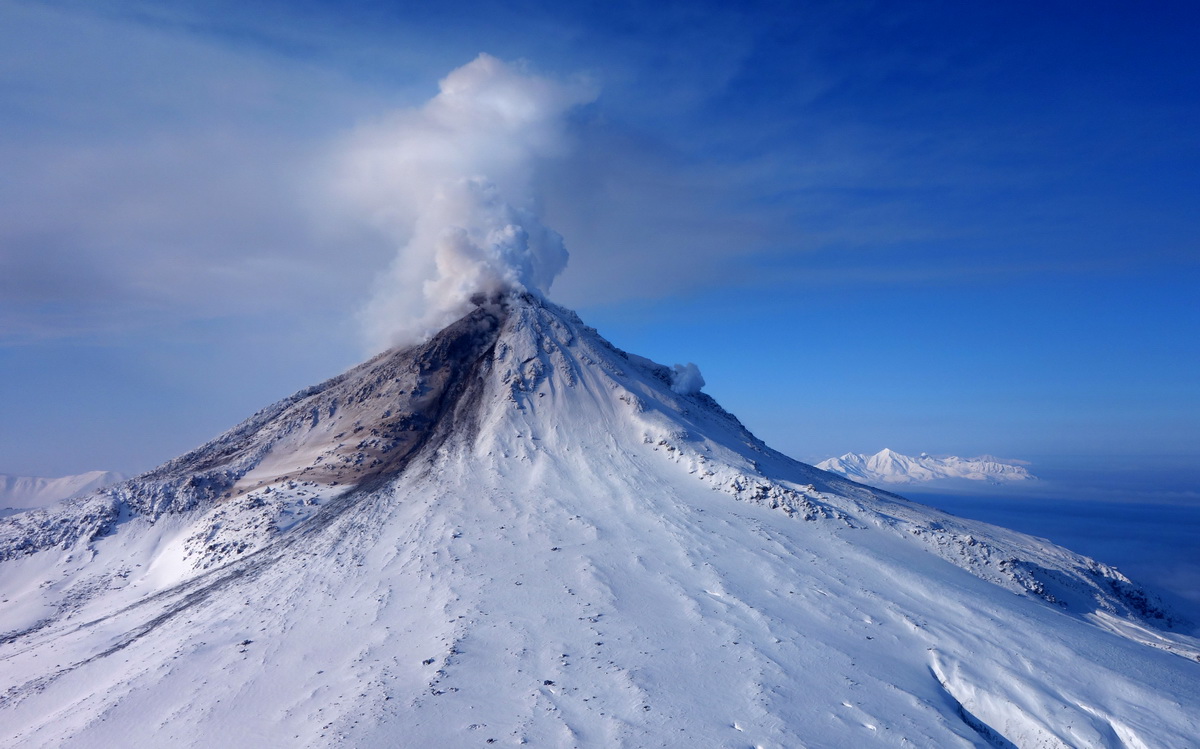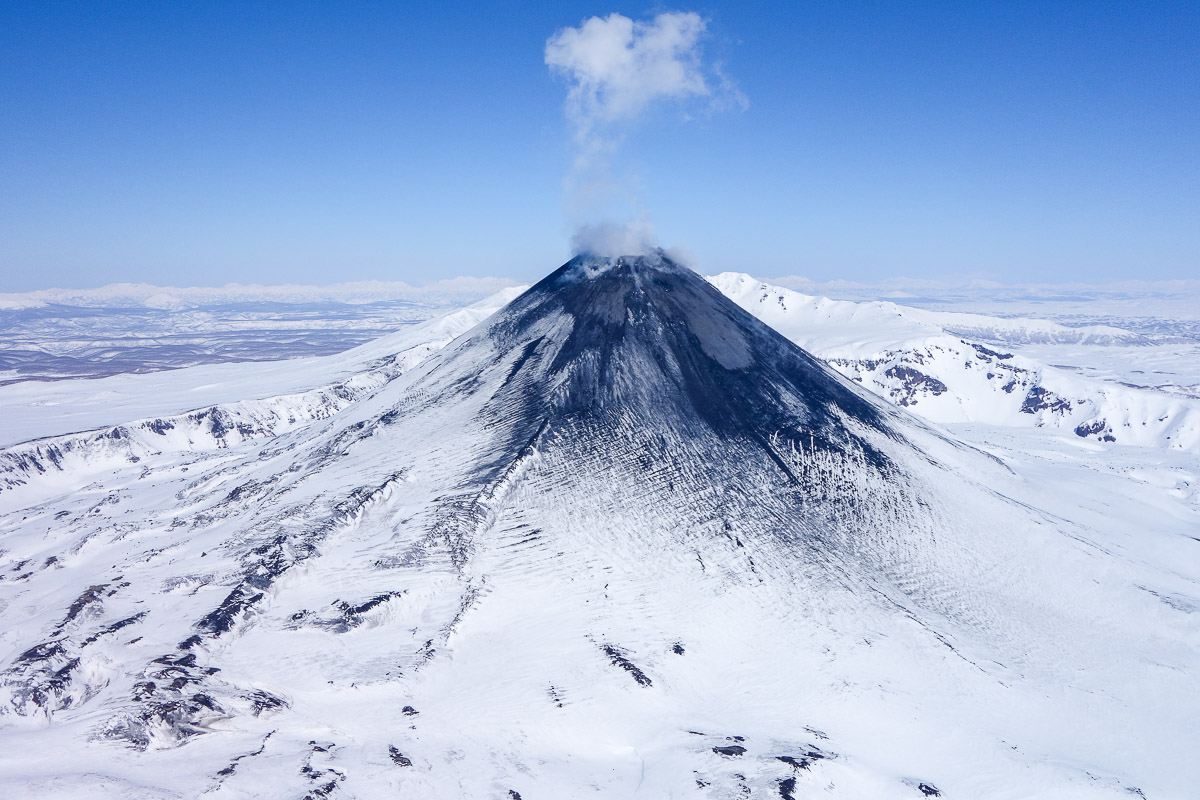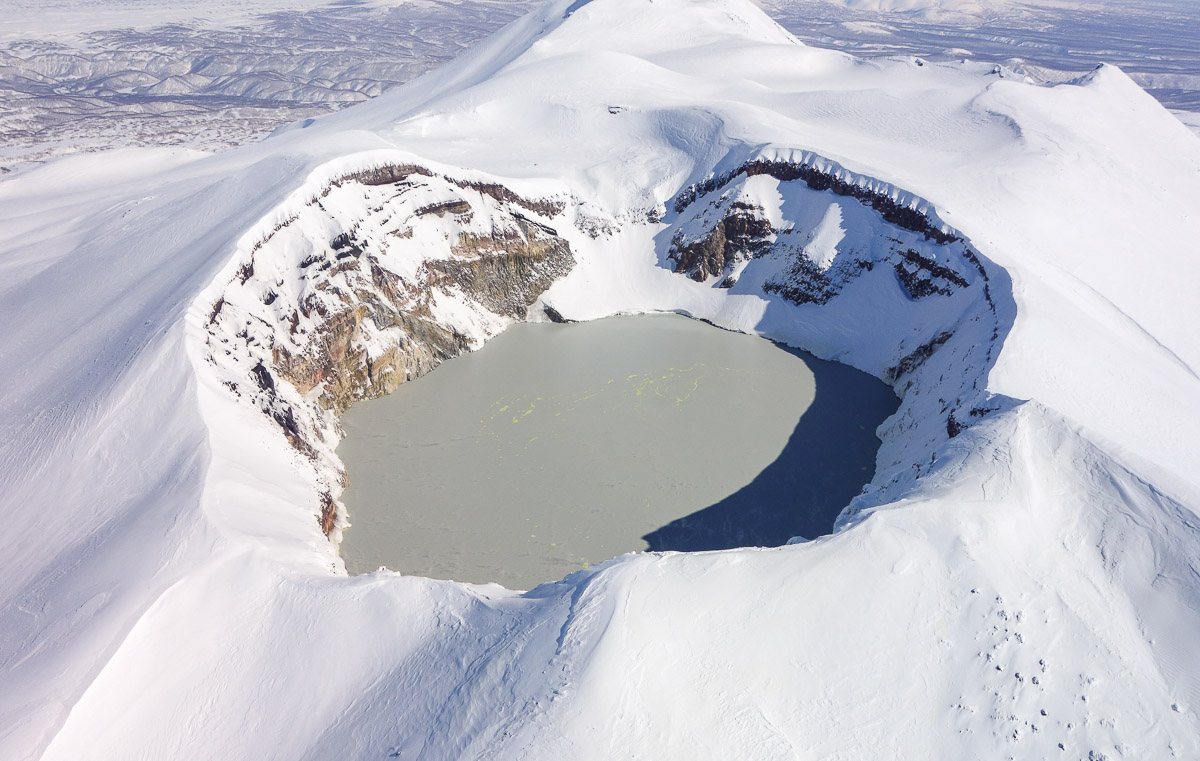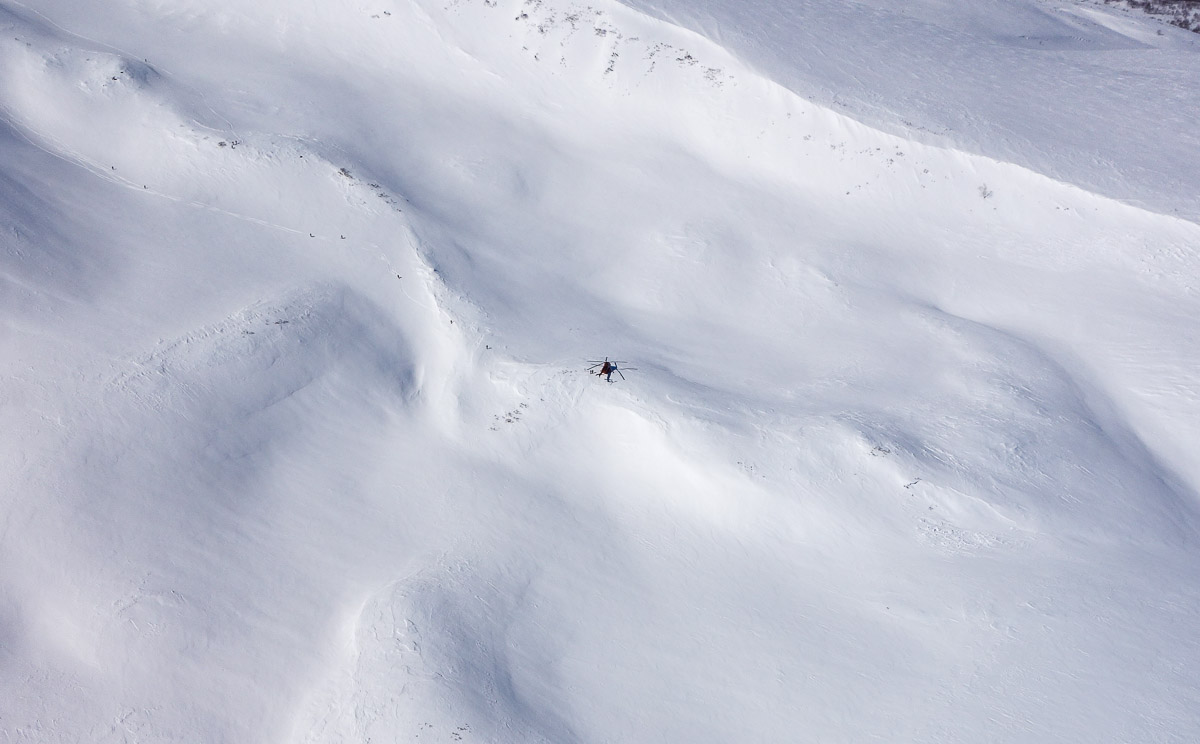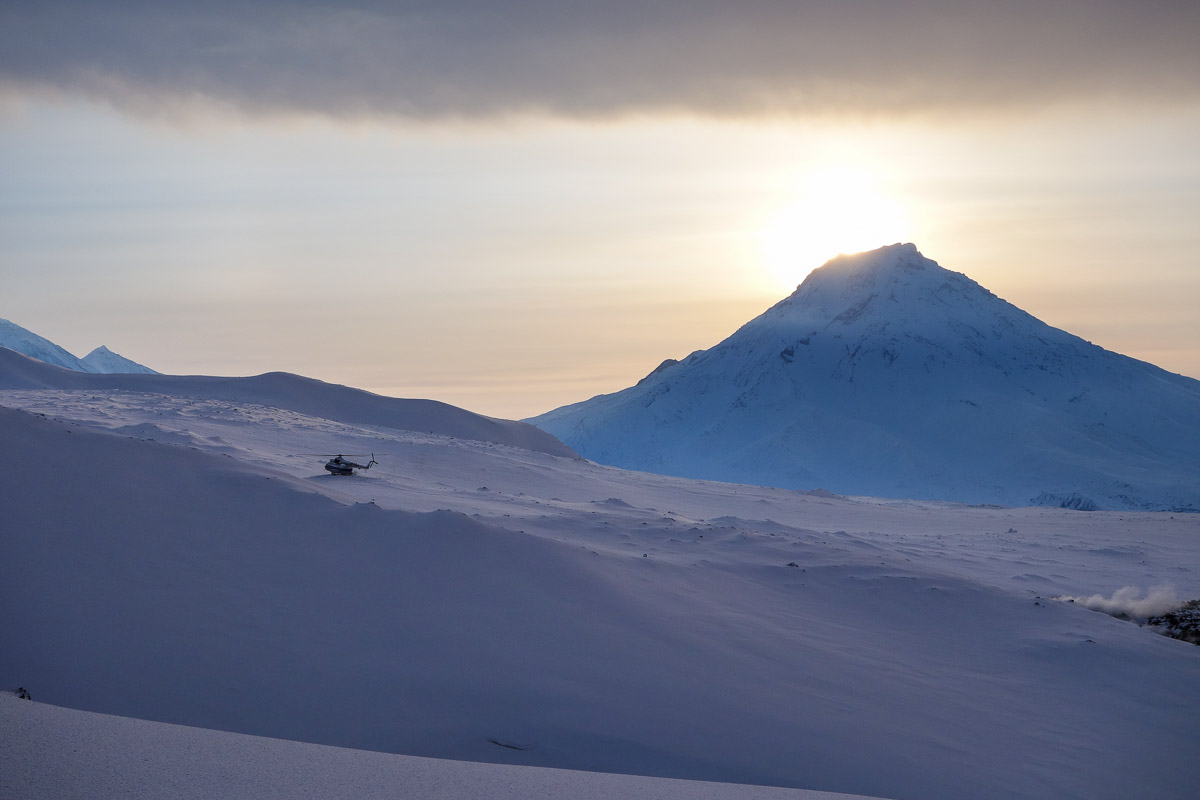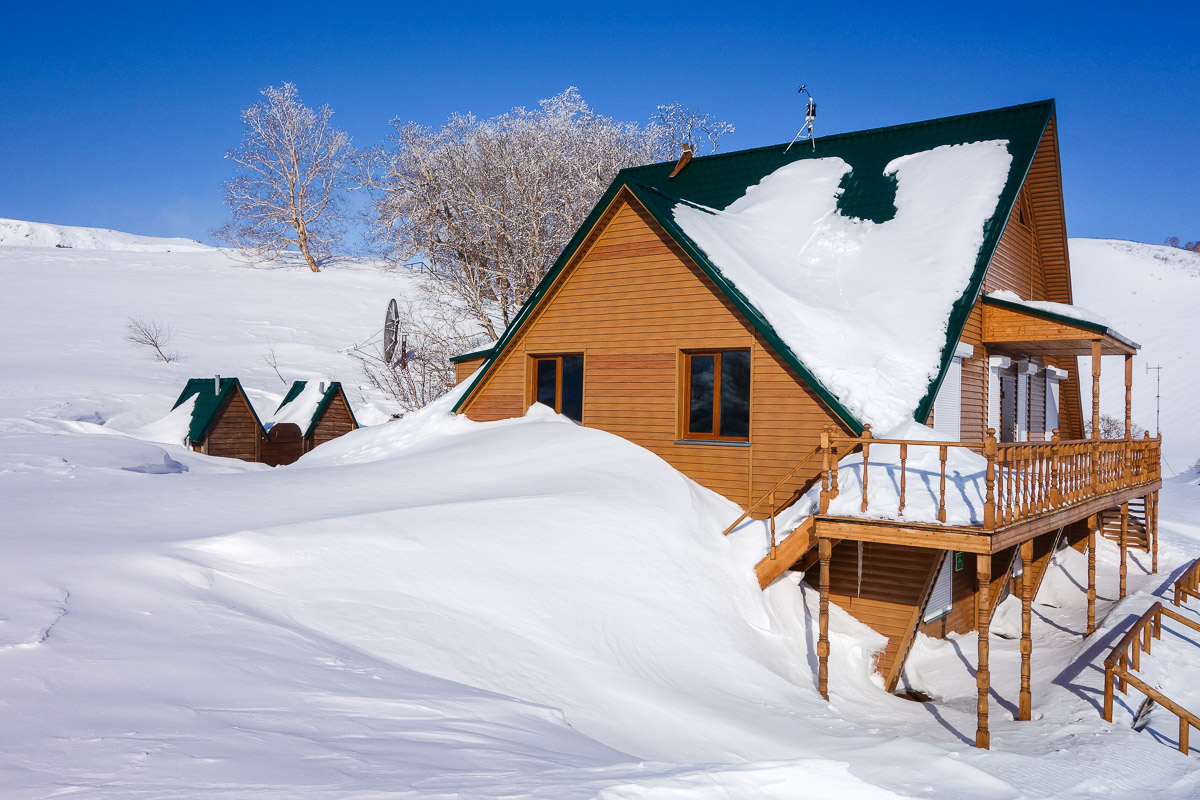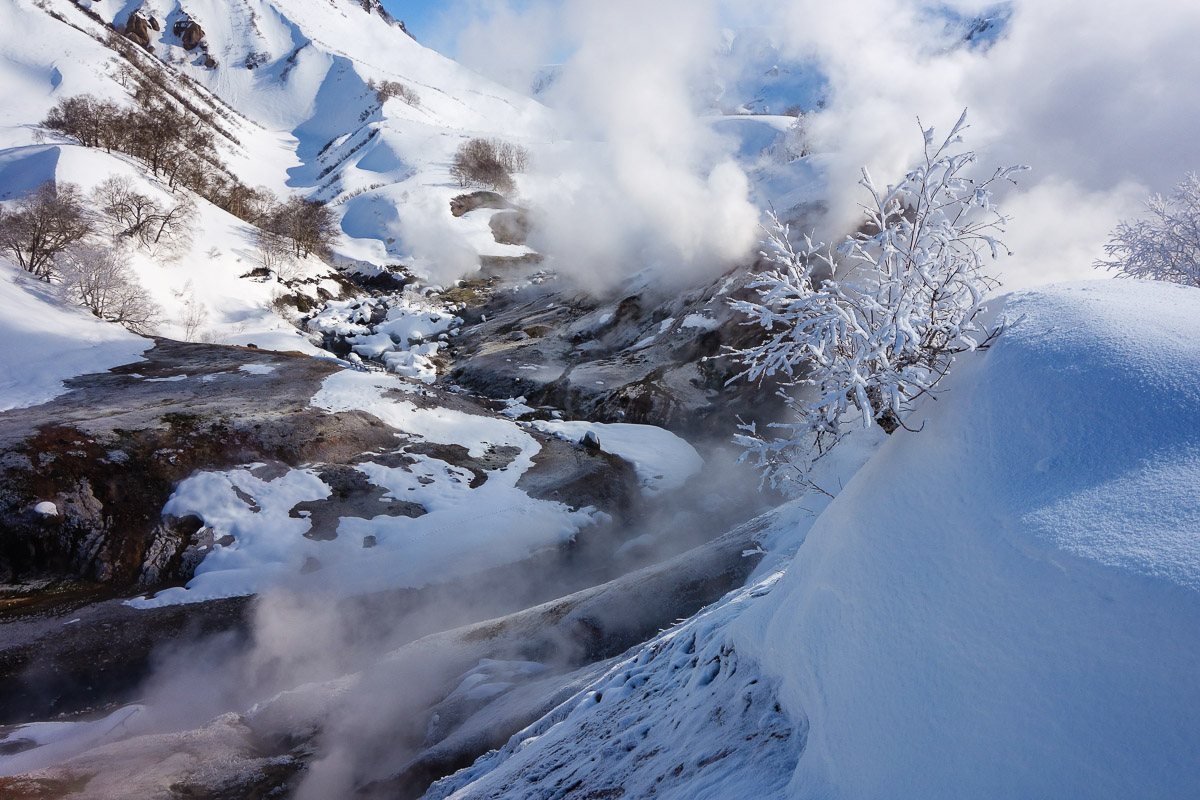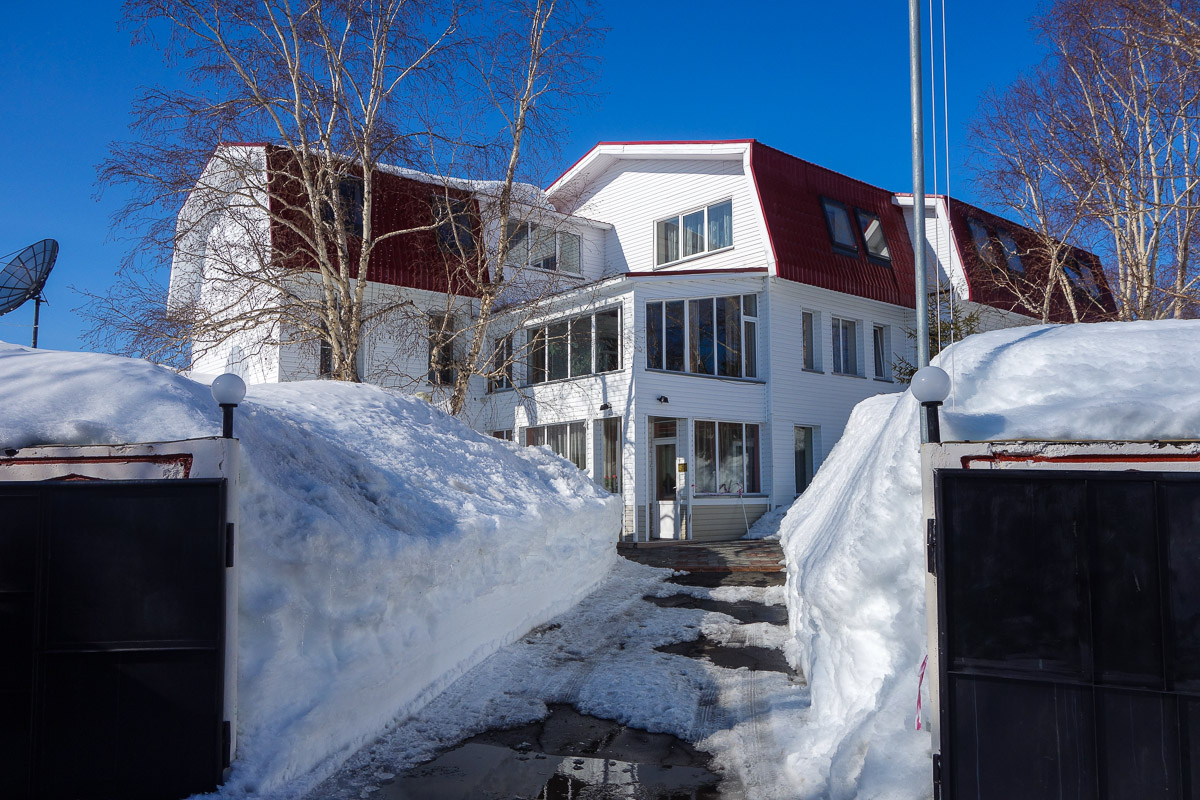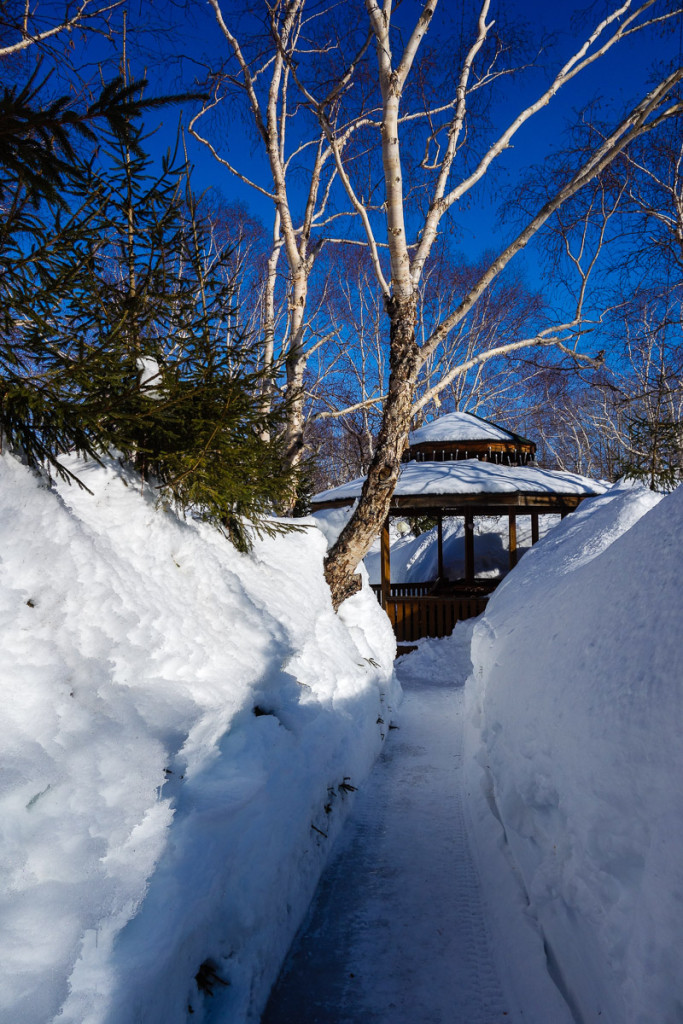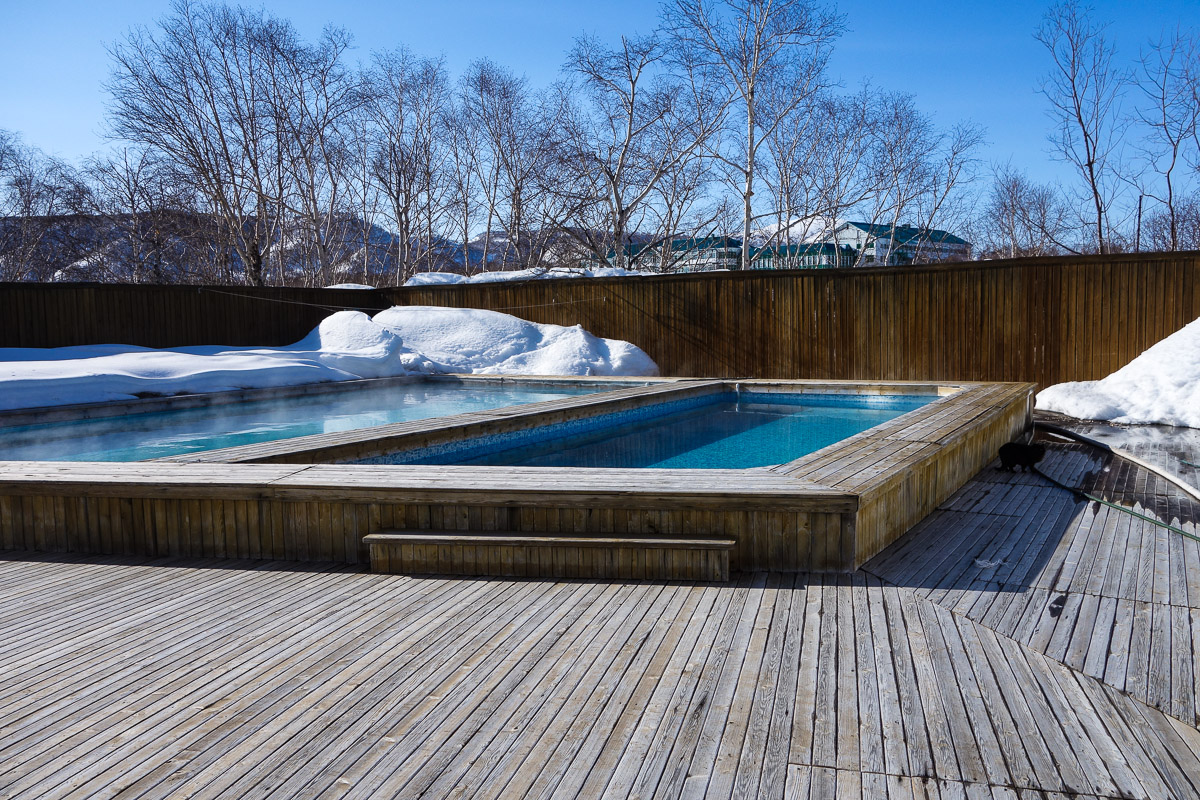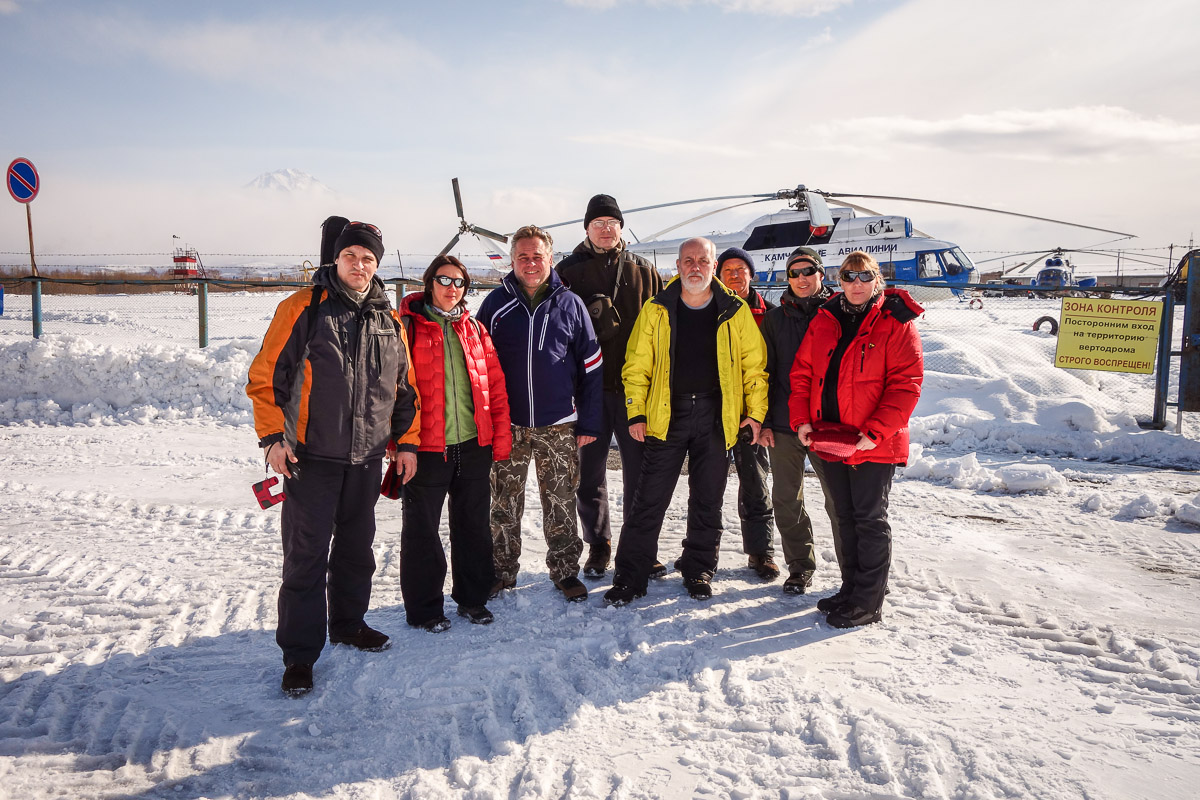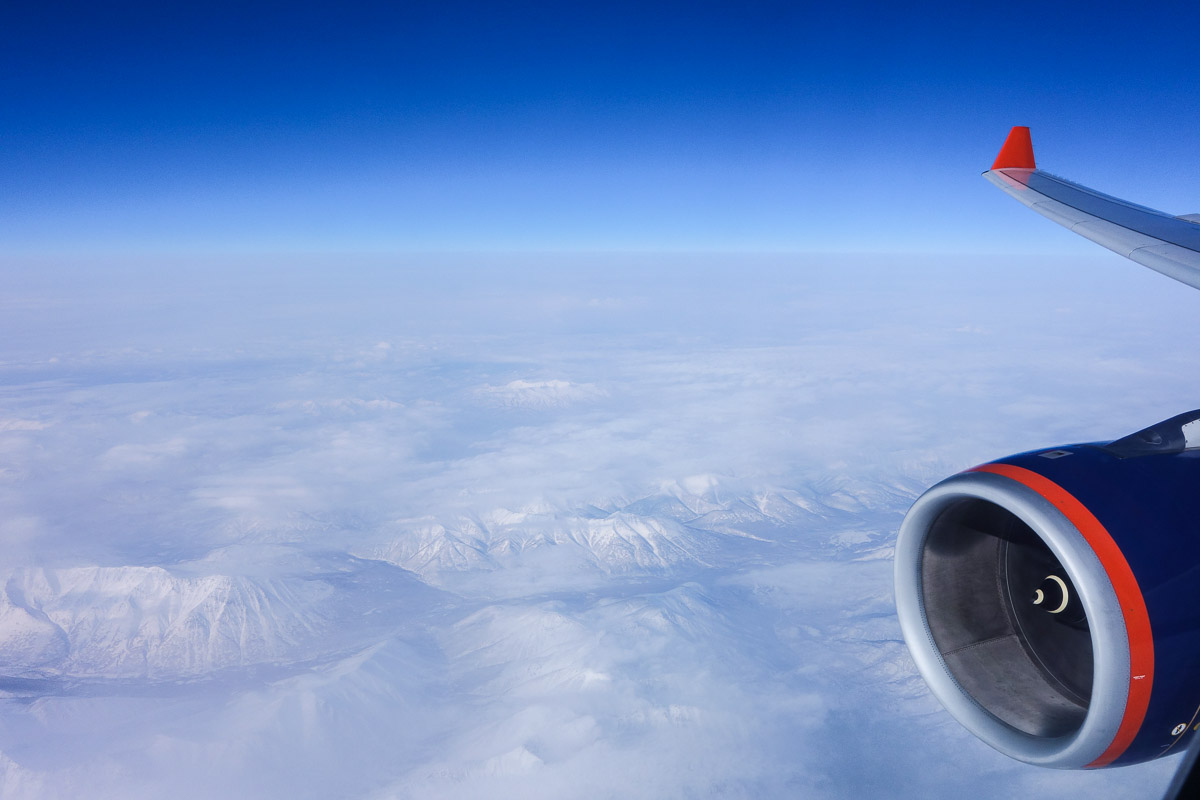April 9, 2013
Blood of the Earth
Search engines will lead you to sites claiming that the “blood of the Earth” is oil. Don’t believe a word of it. The blood of the Earth in fact looks like this:
Here we are, April, on the Kamchatka Peninsula, checking out the Tolbachik volcano erupting – on a long-weekend trip. It’s a long way to go for a long weekend, but for me and crew – it sure was worth it.
Straight to the (lava) chase…
Down fields of freshly cooled (black) lava here flow crackling (bright red) liquid lava streams around 10 meters (30 feet) in width. Sometimes the lava flows get blocked, forming red hot lava lakes. The lava is stodgy, viscous, cloggy, plodding and… awesome! Sometimes it comes up against large rocky growths and finds itself new channels to creep along. Other times it hides under an outer shell that has cooled, and then appears again out of its ‘tunnel’ on to the surface. The meandering red snakes of lava are really quite creepy (he, hey!) – how they form waterfalls here, form islands of black there… Then the red stuff rolls down further, where it thickens and congeals into freaky little hills, which themselves slowly continue to move down further, nudged on by new flows of lava.
The scene is just hypnotic; especially at night when the incandescent lava and red hot rocks are much brighter. Mostly black by day, at night the lava fields are crisscrossed with bright red rivers and studded with similarly bright red spots.
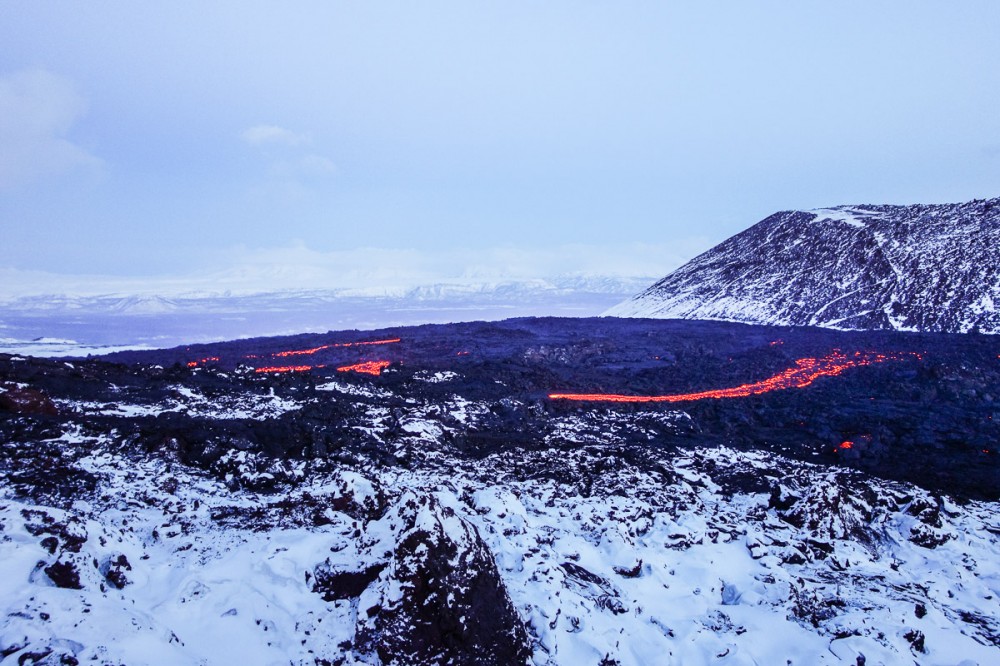 Extreme Earth: its coolest precipitation + its hottest emissions, side-by-side
Extreme Earth: its coolest precipitation + its hottest emissions, side-by-side
It goes without saying that the lava is horrendously hot. You can only get about two or three meters (6-9 feet) up to it – no closer. What was really surprising was its being quite solid – a stone thrown into it doesn’t splash and then sink as you might expect; it hits the surface with a dull thud, rolls over the surface a few times, and then gets carried along on the surface by the lava flow.
A scorching, rich red, plasticized river. A bit of a creepy sight to behold.
 I do believe that’s Ballantine’s
I do believe that’s Ballantine’s
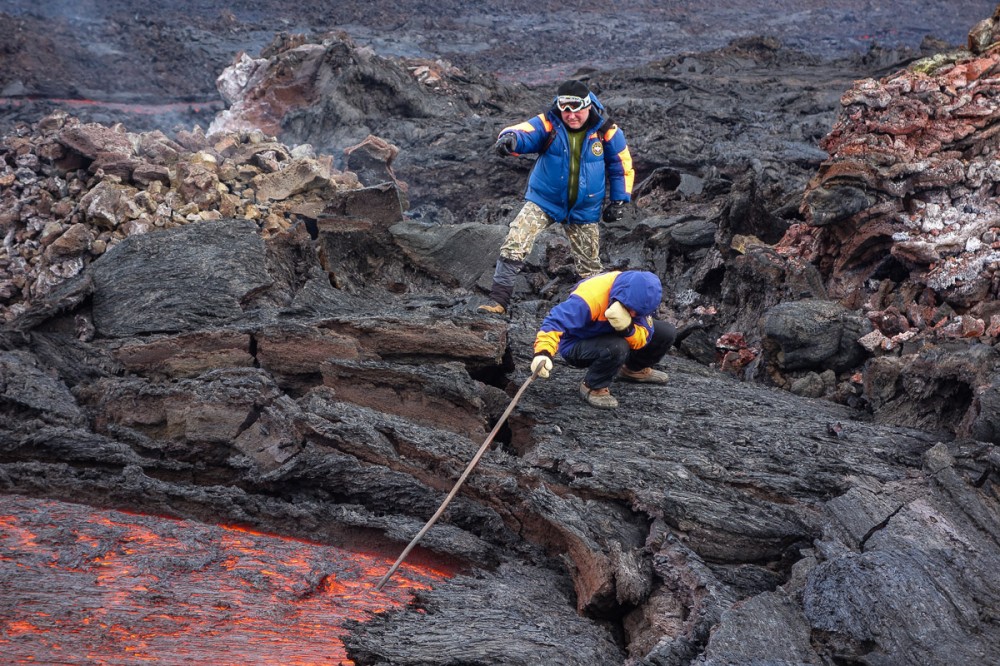 Looks fearsomely awesome? Imagine actually being there
Looks fearsomely awesome? Imagine actually being there
The current eruption is coming from a side crater, somewhere here:
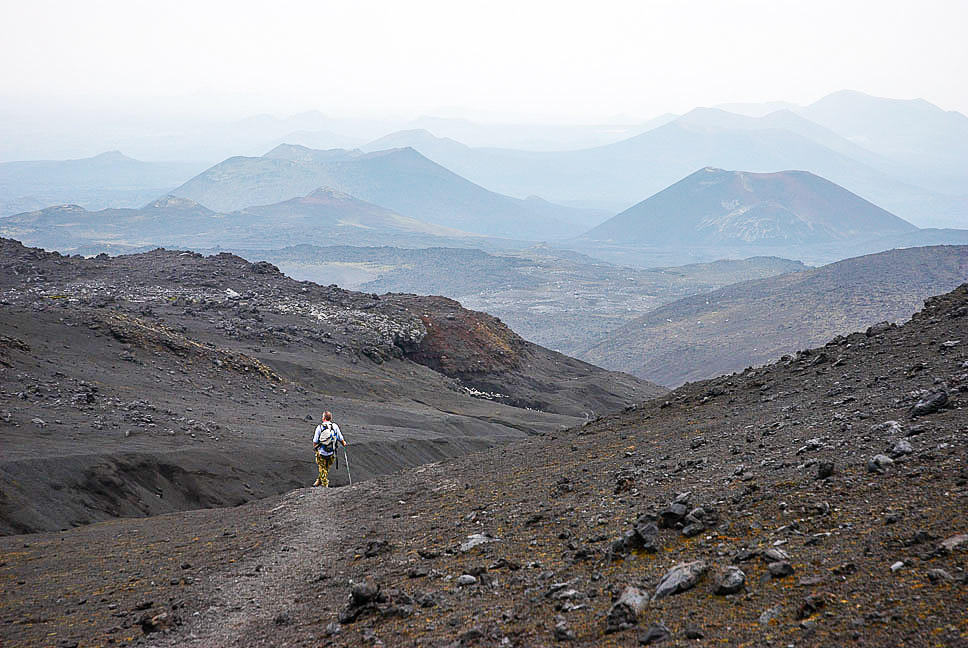 A pic of me here five years ago at today’s epicenter
A pic of me here five years ago at today’s epicenter
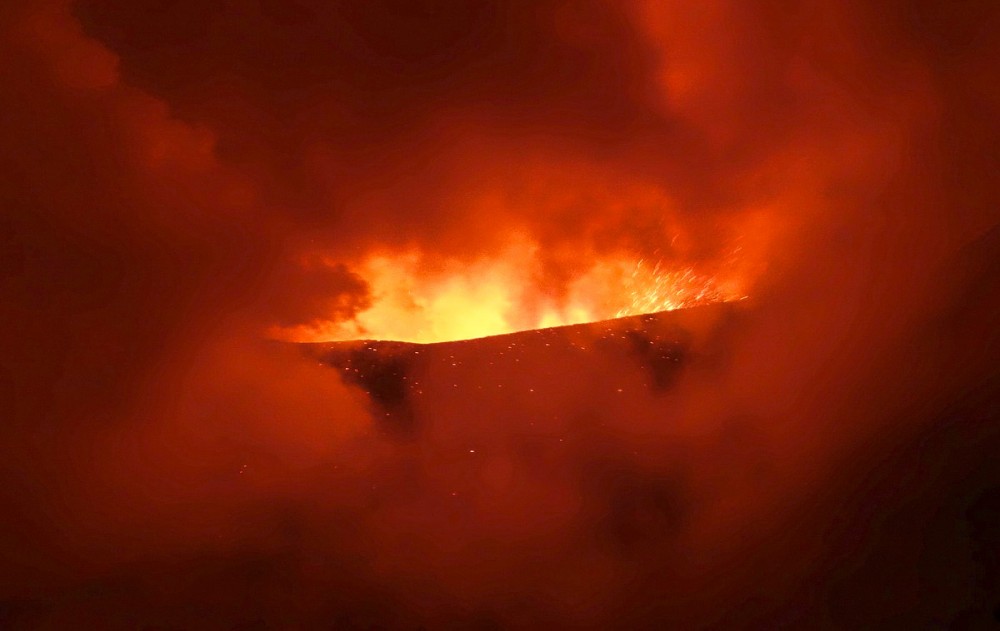 And here we are – same place today!
And here we are – same place today!
The volcano thunders like… like some Thor-like giant beating a massive sledgehammer against a sheet of metal about the size of an Olympic stadium. Other times it sighs like… an Olympic-stadium-sized elephant!
From the mouth of the crater are constantly spewed rocks whose sizes are difficult to gauge, but judging by the feel from their hitting the ground – I’d say they’re about a meter in diameter.
It’s best watching this fireworks show at night – much like the lava, by day the flying rocks are black, but at night they glow bright red, yellow or orange (alas, neither our experience nor kit could stretch to taking reasonable nighttime pix).
The active crater of the volcano is about 2000 meters above sea level. So as you’d imagine it’s gets pretty chilly here this time of year – getting down to minus 20°C (-5°F) at night. By day it warms up a little, but there’s also the most ferocious of winds to contend with, which sometimes gets so unbearable as to seem to blow right through you.
So, should anyone fancy a trip out here in time to catch the eruption – take lots of really warm clothes and a suitably extreme-mountaineering-type tent. And boots with a thicker outsole – they’ll take longer to melt down :)
And take a suitcase-load of cash too. You can only get up to the crater and the liquid lava streams by helicopter. And of course the fairs have shot up – much like the lava. Or you could try hitch a ride with the numerous volcanists heading for the crater if you’re lucky.
Don’t forget to take lots of food either. If the weather turns bad and stays bad you can get delayed here for weeks – as some intrepid Russian photographers we came across found out the hard way (see the Tolbachik follow-up post – coming shortly…). Fortnights spent in limbo up a volcanic mountain waiting until the skies become navigable again by helicopters are common. But even if a chopper can fly up top and land ok, the weather can change all of a sudden for the worse, and you’ll be grounded together with the helicopter for another while. That’s what happened with us.
It gets so cold up here… it’s like one big deep freezer. So most suitable are salo, chocolate and vodka (for the uninitiated – vodka should always be stored in the freezer :). Plentiful supplies of water are also needed. The snow here is strictly off the menu – it’s covered in slag and ash and therefore quite toxic.
And now for some assorted Kamchatka delights in the winter mode: Kizimen, Karymsky, and Semyanchik – with its acidic lake, which periodically changes color; six years ago it was turqoise, then it went light gray, then almost white, and now it’s gray with yellow sulfuric streaks.
The Valley of the Geysers was completely snowbound, so we weren’t able to walk much around it. Visibility is poor here in winter too as there’s steam everywhere. We managed to be by the Velikan (Giant) geyser when it erupted (occurring every six to eight hours), but alas everything was covered in steam so we didn’t see all that much.
Kamchatka snow at Paratunka (our hotel). Incidentally, practically every hotel in the region has its own natural thermal swimming pool. Nice!
In all, a thoroughly thrilling extreme boutique-expedition. I’d recommend you go on something similar. A volcano erupting and its rivers of lava – a must-see if ever there was one.
P.S. On April 1, on the local Kamchatka news they joshed that the lava from the Tolbachik eruption contained diamonds.
P.P.S. Some amazing Tolbachik pics – here.
P.P.P.S. My other Tales from the Kamchatka-Wild(s) Side can be found here.
The rest of the pix are here.
